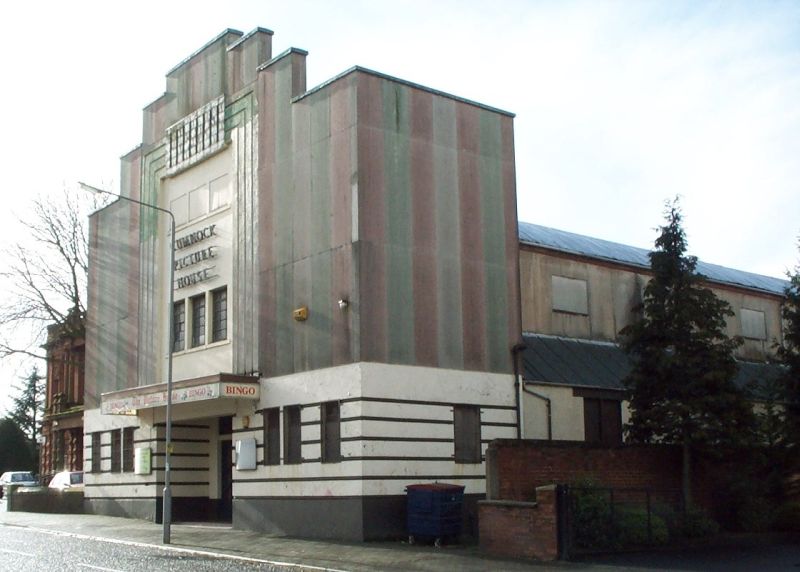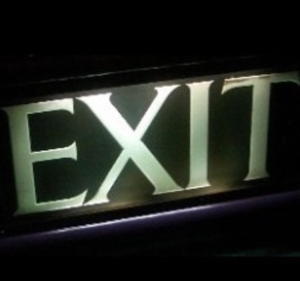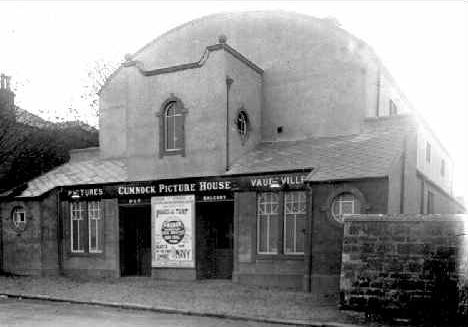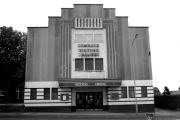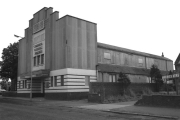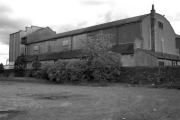Cumnock Picture House was one
of two cinemas owned privately by a Mrs Ward, who had inherited them
from her father (the other was in Auchinleck). Cumnock was the first purpose built
cinema in the area, opening around 1913 (although some sources suggest as early as 1910). It had
400 seats on a single level. In 1973 it converted to bingo and cinema,
before finally closed as a cinema 1980. The building survives to this
day as a bingo hall.
In the thirties the building
had a major refurbishment including a rebuilt new front façade,
that incorporated old projection room and covered the whole front of
building. New Projectors (Kalee 11’s with sound on disc) were also
installed at this time. These were supplied with both small screen and
wide screen lenses, so they were able to show all the latest films,
newsreels, and gazettes in colour, as well as the old silent films. It
is unknown when they were modified for optic sound.
In 1949, as things improved after WWII, the systems were re-equipped,
this time with the Kalee KT21 fully enclosed projector with total fire
fighting ability. Westrex sound system, Kalee 60w amp and Westinghouse
80Amp arc rectifier were also installed. In 1956 these were modified to
handle Cinemascope. The Kalee 21’s stayed in service till the end of
the cinema shows in 1980.
In the early 1960’s a completely new three coloured vertical stripe
asbestos type cladding was put on the upper half of the façade;
the lower half being painted with horizontal stripes. It is this
decoration that is still visible on the exterior today.
The interior changed little over the years, and was all on one level.
What was called the balcony consisted of the top 12 rows of seats above
the cross aisle and separator towards the projection room. Access
was from two side door entrances, whilst the two hallways continued
into the stalls.
The stalls were two blocks of seats with a central aisle, and separated
from balcony by a wooden separator and a row of seats. The front stalls
were 6 rows of seats with wooden backed separator.
The interior had fluorescent lights hung from the ceiling for bingo but
all other original décor still exists.
Pictures below from June 1985 courtesy of Paul Francis.
